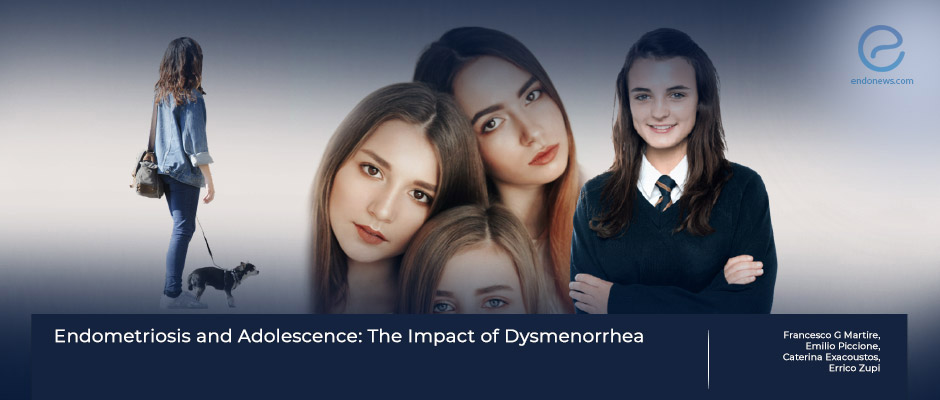Underestimation of Dysmenorrhea in adolescents
Oct 20, 2023
The consideration of dysmenorrhea as a normal and transient symptom in adolescents results in delayed diagnosis of endometriosis
Key Points
Highlights:
- Dysmenorrhea in adolescents should be taken seriously and management should be carried out until the presence of endometriosis is excluded.
Importance:
- Young women or adolescents with dysmenorrhea should be referred to dedicated endometriosis centers to be managed by an experienced multidisciplinary team.
What’s done here?
- This review was conducted to identify the importance of dysmenorrhea in adolescents and young women for the confirmation or exclusion of endometriosis.
- Dysmenorrhea is a common symptom in adolescents and young women which may be a sign of underlying endometriosis.
- Differential diagnosis underlying secondary dysmenorrhea is essential to recover young women with pain which has a poor impact on the quality of life.
Key results:
- One of the main etiologic reasons for secondary dysmenorrhea is endometriosis beginning a few years after menarche.
- Women with endometriosis have more severe pain symptoms compared to those without endometriosis.
- Underestimation of dysmenorrhea in adolescents and young women may result in delayed diagnosis of endometriosis.
- These delays can even cause disease progression leading to more radical treatment modalities.
- Improvement of pelvic pain, blockage of the disease progression, and protection of future fertility are the main targets during the treatment.
- Although there are several medical treatment modalities available, individualized therapy should be performed to provide optimum benefit.
- Endometriosis is a disease prone to recurrence although there are no predictors to estimate its recurrence.
- Although there is no standard follow-up period, re-evaluation of these young women and adolescents every 4–6 months in the first year, and then once a year is suggested by the experienced centers.
Lay Summary
Women with endometriosis may suffer from painful symptoms, especially during menstruation or sexual intercourse. One of the main etiologic reasons for secondary dysmenorrhea is endometriosis, and it has a poor impact on life quality. Underestimation of dysmenorrhea and consideration of dysmenorrhea as a normal and transient symptom in adolescents and young women may result in delayed diagnosis and management of endometriosis.
Martire et al., from Italy, published a review entitled “Endometriosis and Adolescence: The Impact of Dysmenorrhea” in the Journal of Clinical Medicine. The authors sought to assess the importance of dysmenorrhea in adolescents and young women for the confirmation or exclusion of endometriosis.
Adolescents and young women with endometriosis have been detected to suffer from dysmenorrhea and chronic pelvic pain more commonly. All women with clinical suspicion of endometriosis should be referred to experienced endometriosis centers for an early diagnosis and appropriate medical and surgical management. While accurate anamnesis and detailed physical examination play the most important role in diagnosis, using appropriate imaging methods such as ultrasound and/or accelerates the diagnosis. Individualized treatment should be applied taking into account other co-factors such as the age of first menstruation, menstrual cycle characteristics, previous surgical treatment, autoimmune and endocrinological diseases, familial history, severity of symptoms, and localization of the lesions.
Early diagnosis and treatment significantly improve women's quality of life and prevent the progression of the disease.
“Adolescents and young women with dysmenorrhea should be referred to dedicated endometriotic centers for accurate noninvasive diagnosis and adequate medical and/or surgical management, as well as appropriate follow-up,” the authors added.
Research Source: https://pubmed.ncbi.nlm.nih.gov/37685691/
endometriosis adenomyosis adolescence diagnosis dysmenorrhea management

